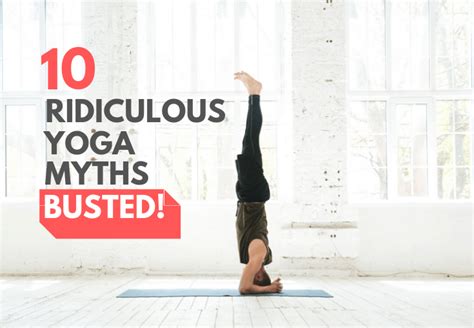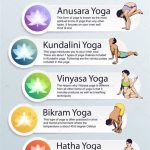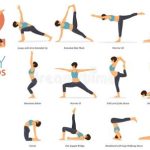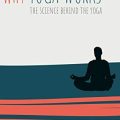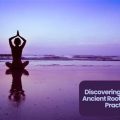4 Common Yoga Myths That Prevent You From Starting: Debunking Misconceptions for a Healthier You
Yoga is often misunderstood, with numerous myths swirling around it that stop people from even giving it a try. While this ancient practice has shown immense benefits for both physical and mental well-being, misinformation continues to prevent potential practitioners from experiencing its full potential. In this article, we’ll tackle four of the most pervasive myths, explain why they’re untrue, and provide a more balanced perspective that will empower you to incorporate yoga into your routine.
Introduction
Yoga is an ancient discipline with origins in India, designed to harmonize the body, mind, and spirit. However, modern interpretations often lead to misconceptions that discourage people from starting their yoga journey. Whether it’s concerns about flexibility, the spiritual aspect, or perceived exclusivity, these myths can stand as unnecessary barriers. In this article, we’ll dissect and debunk four key myths, using evidence and real-world examples to offer clarity and insight.
Key Concepts
Before addressing the myths, it’s crucial to define some foundational terms. Yoga involves more than just physical postures (asanas). It includes breathing exercises (pranayama), meditation, and ethical guidelines for living. In this article, when we refer to yoga, we mean the holistic practice, not just the physical postures you may see in social media posts.
- Asanas: The physical poses practiced in yoga.
- Pranayama: Breath control exercises aimed at enhancing focus and relaxation.
- Meditation: A mental practice to foster mindfulness and inner calm.
- Hatha Yoga: A traditional form of yoga focusing on physical postures and breathing techniques.
Myth 1: “You Need to Be Flexible to Start Yoga”
One of the most common myths is that you must be incredibly flexible to do yoga. This perception likely stems from images of experienced yogis in challenging poses. However, yoga is about improving flexibility, not requiring it from the outset.
Counterpoint: Yoga is adaptable and can be tailored to any skill level, including absolute beginners. Research has shown that even those who are less flexible experience improvements in their range of motion and joint health over time.
Example: Poses like Downward Dog or Child’s Pose can be modified using props like blocks or straps to accommodate different levels of flexibility. Beginner classes focus on alignment and breath control rather than complex poses.
| Pose | Purpose | Modification Example |
|---|---|---|
| Downward Dog | Stretches the hamstrings and spine | Use a block under the hands for support |
| Child’s Pose | Resting posture | Place a cushion under the hips for comfort |
Myth 2: “Yoga is Only for Spiritual People”
Another misconception is that yoga is a religious or spiritual practice, and therefore not suitable for everyone. While yoga has roots in Indian spirituality, it has evolved into a diverse practice that can be secular or spiritual, depending on the practitioner.
Counterpoint: Many people practice yoga solely for its physical and mental health benefits, such as improved strength, flexibility, and stress reduction. Yoga studios often offer classes that focus on fitness, mindfulness, or relaxation without any religious undertones.
Example: Fitness-focused forms of yoga, such as Vinyasa or Power Yoga, prioritize physical movements over spiritual teachings. These classes emphasize flowing sequences of postures to build strength and stamina, with no explicit spiritual messaging.
Myth 3: “Yoga Is Only for Young and Fit People”
Yoga is frequently portrayed as an activity for the young and athletic, creating the illusion that older adults or those with physical limitations can’t participate. This stereotype is damaging and far from the truth.
Counterpoint: There are many different styles of yoga, and many of them cater to people with varying levels of fitness and age. Gentle practices like Yin Yoga or Chair Yoga are ideal for older adults or those with mobility issues.
Example: Chair Yoga allows individuals with limited mobility to perform modified poses while seated, ensuring accessibility. Similarly, Restorative Yoga uses props to support the body, allowing people to hold poses for longer periods without strain.
| Yoga Style | Key Focus | Best for |
|---|---|---|
| Yin Yoga | Slow, passive stretching | Older adults, beginners, and those with joint issues |
| Chair Yoga | Modified poses using a chair for support | People with limited mobility |
Myth 4: “Yoga Requires a Lot of Time and Money”
The idea that yoga demands significant time and financial investment can deter people from starting. High-end yoga studios, expensive gear, and long sessions may seem intimidating.
Counterpoint: You don’t need to commit hours or spend a fortune to enjoy the benefits of yoga. Many free resources are available online, and even 10–15 minutes of practice a day can yield significant health improvements.
Example: Platforms like YouTube offer a plethora of free yoga tutorials for all levels, allowing you to practice at home with minimal equipment—just a yoga mat or even a towel. Short, focused sessions can be easily integrated into your daily routine.
| Resource | Cost | Duration |
|---|---|---|
| YouTube Yoga Tutorials | Free | 5–60 minutes |
| Yoga Apps | Free/Paid | 5–45 minutes |
Historical Context
Yoga originated in ancient India over 5,000 years ago and was primarily a meditative and spiritual practice aimed at self-realization. The physical aspect, asanas, was only one part of a broader, more holistic approach to life. As yoga migrated to the West, the focus shifted more toward physical health and fitness, though many traditional aspects are still practiced today.
It’s crucial to acknowledge yoga’s rich history to understand how myths about it have evolved. The commercialization and modernization of yoga, especially in the Western world, have created skewed perceptions that often contradict its original intentions.
Current State Analysis
Today, yoga is practiced by millions worldwide, with the global yoga market projected to grow to over $66 billion by 2027. Despite its popularity, these myths persist, often due to social media representations of idealized, advanced postures or the high cost of boutique studios. Understanding the diversity of yoga styles and approaches can help break down these barriers, making it more accessible to a broader audience.
Practical Applications
To begin practicing yoga, all you need is a willingness to start. There are many ways to make yoga work for your schedule, body, and budget:
- Start with beginner-friendly resources, such as online classes.
- Practice at home using minimal equipment.
- Incorporate short, 10–15 minute sessions into your daily routine.
- Explore different styles until you find one that suits your preferences.
Case Studies
Many individuals have used yoga to improve their health and well-being:
- Susan: A 55-year-old with chronic back pain, Susan started practicing gentle Hatha Yoga and found significant relief in her lower back after six months.
- Mike: A busy professional, Mike integrates short Vinyasa yoga sessions into his lunch breaks to manage stress and stay fit.
- Rita: A senior who practices Chair Yoga to maintain mobility and balance, Rita finds the practice essential to her daily life.
Stakeholder Analysis
Yoga benefits various groups, each with different needs:
- Health Professionals: Recommending yoga as a complementary therapy for stress reduction and physical health.
- Employers: Encouraging yoga to improve employee well-being and productivity.
- Individuals: Using yoga to manage health issues, enhance physical fitness, or achieve mental clarity.
Implementation Guidelines
If you’re ready to start your yoga journey, consider the following steps:
- Begin with beginner-level classes to familiarize yourself with the basics.
- Modify poses as needed—there’s no shame in adapting the practice to suit your body.
- Be consistent. Even short, regular practice is more effective than occasional long sessions.
Ethical Considerations
As yoga gains global popularity, issues such as cultural appropriation and the commercialization of the practice have come to the forefront. Respecting the origins of yoga while making it accessible to modern practitioners requires a delicate balance.
Limitations and Future Research
While yoga has many benefits, more research is needed on its long-term impact on chronic conditions such as arthritis or hypertension. Moreover, further exploration into how different populations (e.g., older adults, those with disabilities) can benefit from specialized yoga programs is warranted.
Expert Commentary
Experts in both fitness and mental health have widely acknowledged the benefits of yoga. According to Dr. Jane Ellis, a physical therapist, “Yoga offers a low-impact way to build strength, flexibility, and mindfulness.” Meanwhile, Dr. Alan Brewer, a psychologist, emphasizes, “The mental health benefits of yoga—particularly in managing stress and anxiety—are profound.”
